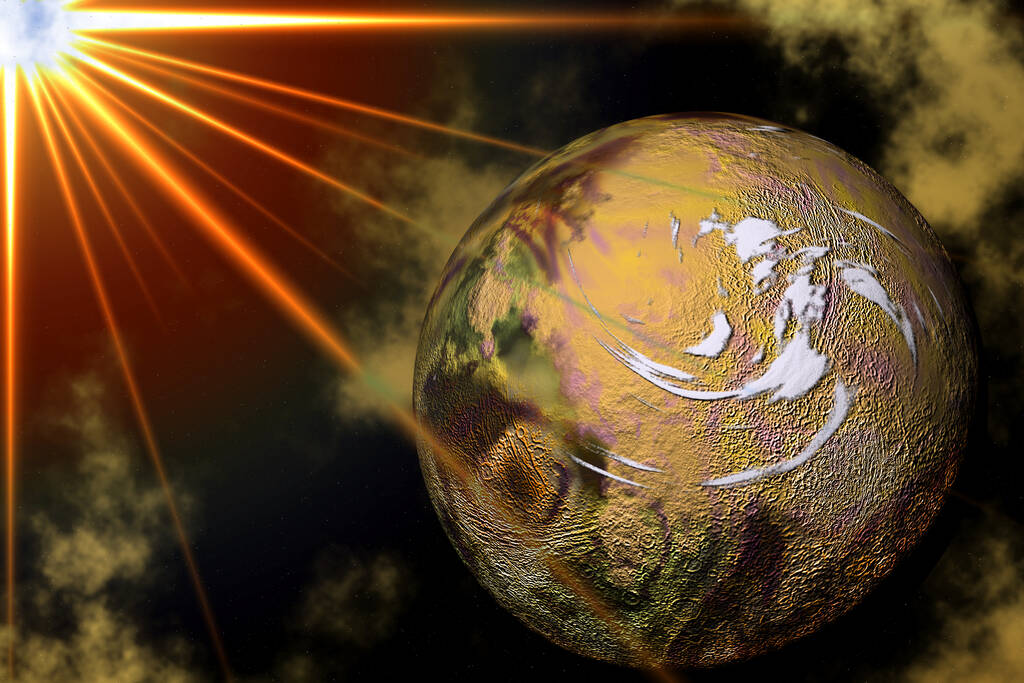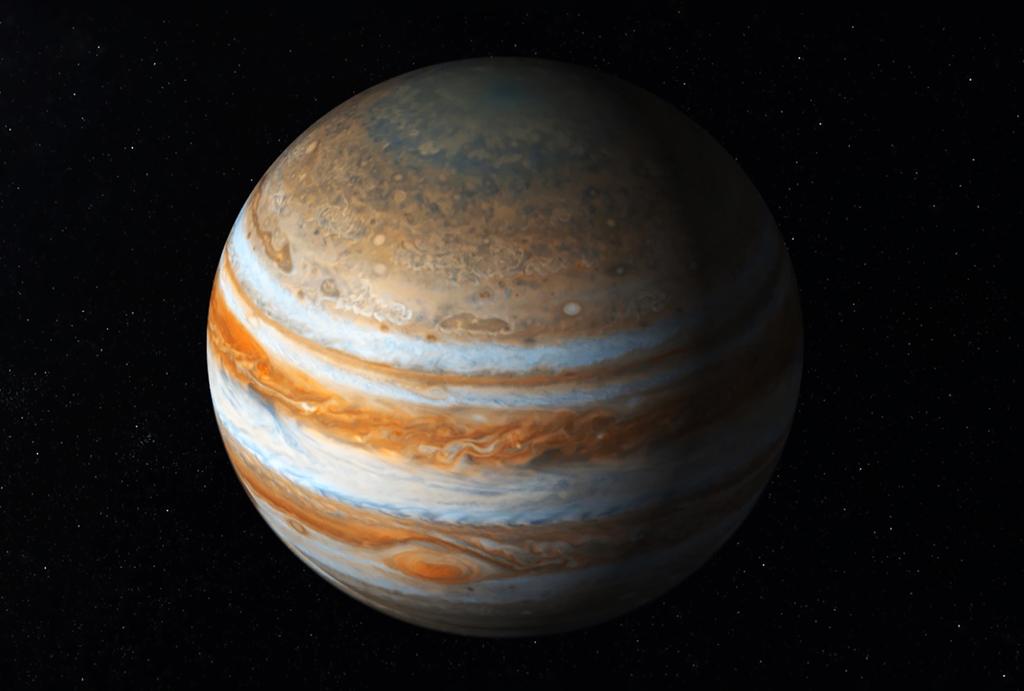Webb Telescope Detects Rotten Egg Smell in Exoplanet Atmosphere
Key Takeaways
The James Webb Space Telescope (JWST) detected hydrogen sulfide in the atmosphere of exoplanet HD 189733b. Hydrogen sulfide gives off a rotten egg smell and is a key component in understanding exoplanetary atmospheres. HD 189733b is a “hot Jupiter” with extreme weather conditions and is not habitable. Spectral analysis from JWST provided insights into the atmospheric composition, including the lack of methane and the presence of metals. JWST’s findings help improve models of exoplanet formation and atmospheric characteristics.
Summary
- Exoplanet HD 189733b detected with hydrogen sulfide by JWST
- Hydrogen sulfide causes a rotten egg smell
- HD 189733b is 13 times closer to its host star than Mercury
- Extreme weather: raining glass, 8,000 kph winds, temperatures above 900°C
- JWST detected sulfur and metals in the atmosphere
- No methane detected despite previous studies indicating its presence
- JWST’s data enhances understanding of exoplanet formation
- HD 189733b serves as a baseline for comparing other gas giants
Main Article
Studying the atmospheres of exoplanets provides invaluable insights into their formation, composition, and potential habitability. Recently, a study by Guangwei Fu and colleagues from John Hopkins University (JHU) revealed that the James Webb Space Telescope (JWST) detected hydrogen sulfide in the atmosphere of exoplanet HD 189733b, a discovery that added a unique “scent” to our understanding of this distant world.
The Discovery of Hydrogen Sulfide
Hydrogen sulfide, known for its characteristic rotten egg smell, was detected in trace amounts in the atmosphere of HD 189733b. This discovery was part of a study published in Nature and was highlighted by JHU’s press department with the intriguing headline, “Stench of a gas giant? Nearby exoplanet reeks of rotten eggs.” Despite the minuscule amount detected, hydrogen sulfide’s presence is significant due to its role in atmospheric chemistry and potential biological processes.
Spectral Analysis with JWST
The detection was made possible through spectral analysis, a technique that allows scientists to identify the composition of an atmosphere by studying the light emitted or absorbed by its molecules. The JWST, one of the most powerful tools for such observations, revealed not only hydrogen sulfide but also other sulfur compounds, which are considered building blocks of life.

HD 189733b: A Hostile World
HD 189733b is one of the nearest known “hot Jupiters,” located 13 times closer to its host star than Mercury is to the Sun. Its extreme proximity results in severe weather conditions, including sideways raining glass, winds reaching 8,000 kilometers per hour, and temperatures soaring above 900°C. These factors make the planet inhospitable to life as we know it.
Atmospheric Composition
In addition to hydrogen sulfide, the study by Fu et al. discovered various metals in the atmosphere of HD 189733b, contributing to its overall “metallicity.” Metallicity is a measure of the metal content in celestial bodies and can provide clues about their formation and evolution. Interestingly, the study did not detect methane, a finding that contradicted previous studies which suggested its presence.
Implications for Exoplanet Research
The detection of hydrogen sulfide and the absence of methane in HD 189733b’s atmosphere are crucial for refining our models of exoplanet formation and atmospheric composition. As Dr. Guangwei Fu noted, “Understanding the atmospheric makeup of exoplanets like HD 189733b helps us piece together the puzzle of planetary formation and the potential for life elsewhere in the universe.”

JWST: A Powerful Tool for Exoplanetary Science
JWST continues to revolutionize our understanding of exoplanets. Its advanced capabilities allow for detailed analysis of atmospheric components, helping scientists build more accurate models of exoplanetary atmospheres. As more data is collected, HD 189733b’s atmospheric profile will serve as a reference point for studying other gas giants.
Conclusion
The detection of hydrogen sulfide in the atmosphere of HD 189733b by JWST marks a significant milestone in exoplanetary science. This discovery not only adds a unique “smell” to our knowledge of this distant world but also enhances our understanding of exoplanetary atmospheres and formation processes. As JWST continues to gather data, our comprehension of these distant worlds will undoubtedly deepen, bringing us closer to answering fundamental questions about the universe and our place within it.
Tables
Table 1: Key Atmospheric Components of HD 189733b
| Component | Presence (Yes/No) | Notes |
|---|---|---|
| Hydrogen Sulfide | Yes | Trace amounts detected by JWST |
| Methane | No | Previously suggested, but not confirmed by JWST |
| Metals | Yes | Various metals contributing to high metallicity |
| Sulfur Compounds | Yes | Important for understanding potential life |
Table 2: Comparison of Hot Jupiters’ Atmospheric Characteristics
| Exoplanet | Distance to Star (AU) | Key Atmospheric Components | Weather Conditions |
|---|---|---|---|
| HD 189733b | 0.03 | Hydrogen sulfide, metals, sulfur compounds | Raining glass, 8,000 kph winds, 900°C+ |
| WASP-121b | 0.025 | Water vapor, titanium oxide | Extreme heat, possible stratosphere |
| KELT-9b | 0.035 | Iron, titanium, molecular hydrogen | Temperatures over 4,000°C |
Hashtags
#Exoplanets, #JWST, #Astronomy, #SpaceExploration, #HD189733b, #HydrogenSulfide, #HotJupiter, #SpectralAnalysis, #Astrophysics, #Universe
References
- JHU – Stench of a gas giant? Nearby exoplanet reeks of rotten eggs. And that’s a good thing
- Fu et al. – Hydrogen sulfide and metal-enriched atmosphere for a Jupiter-mass exoplanet
- Universe Today – Carbon Dioxide Detected on Exoplanet HD 189733b
- Universe Today – What’s the Weather Like on Extrasolar Planet HD 189733b?

